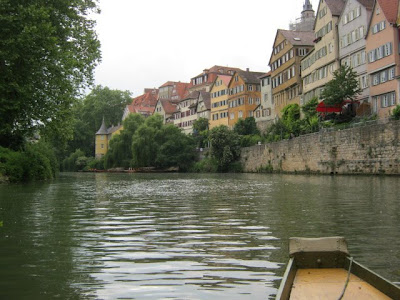




On September 17-19, 2010, the German Fulbright Commission, in conjunction with UW-Milwaukee's Center for Internationl Studies, hosted te Fulbright Teacher Spring Seminar Evaluation Meeting here in Milwaukee. I was fortunate enough to be invited. I was also able to invite Ms. Inga Poetzl from the German Fulbright Commission to come to USM to meet with administration, faculty, and students.
Friday evening, Fulbright and the Center for International Studies at UWM hosted the seminar participants to a River Walk food tour. The highlights included a visit to he Fonzi shrine and some great cheese.
The program itself was held at the Hefter Conference Center. It included a presentation from Dr. Albert Brugger of the German Immersion School and a lengthy discussion about the pros and cons of the German vs. the U.S. school systems. Dr. Brugger applauded the flexibilty of the American system and its decentralized nature. Most participants agreed that the U.S. system was very good at preparing some kids for college, but offered little to the college bound students, in sharp contradistinction to the German tracking system.
The afternoon session was a debriefing which included discussions about follow up with German schools, problems getting help from administration, and some brainstorming about institutions and funding agencies. What was most striking from the USM perspective was the lack of support for professional development given to most of our peers in public schools. Horror stories abounded about principals and superintendants who blocked student exchanges and professional development. Among the follow up options that were pursued have been: full on exchanges between German and American school; blogs and skype exchanges between German students and American students; and hosting German teachers on their own Fulbright exchanges.
As for USM's follow up, I have set up a Challenge 20/20 partnership with Constanze Hahn in Borna. This is a NAIS sponsored competition that has students from different countries cooperating to develop solutions for Global problems. Constanze and I agreed that we would concentrate on environmental problems, especially water. USM will kick off its participation by attending the Kennan Institute Water Conference which will be held at the Pabst on September 29. Also, students on the USM Spring Break Central Europe Study Trip will have the opportunity for home stays with students and their families in Borna.
On a last note, USM alumna Sara West Tully, is the head of UWM's Center for International Studies.
























